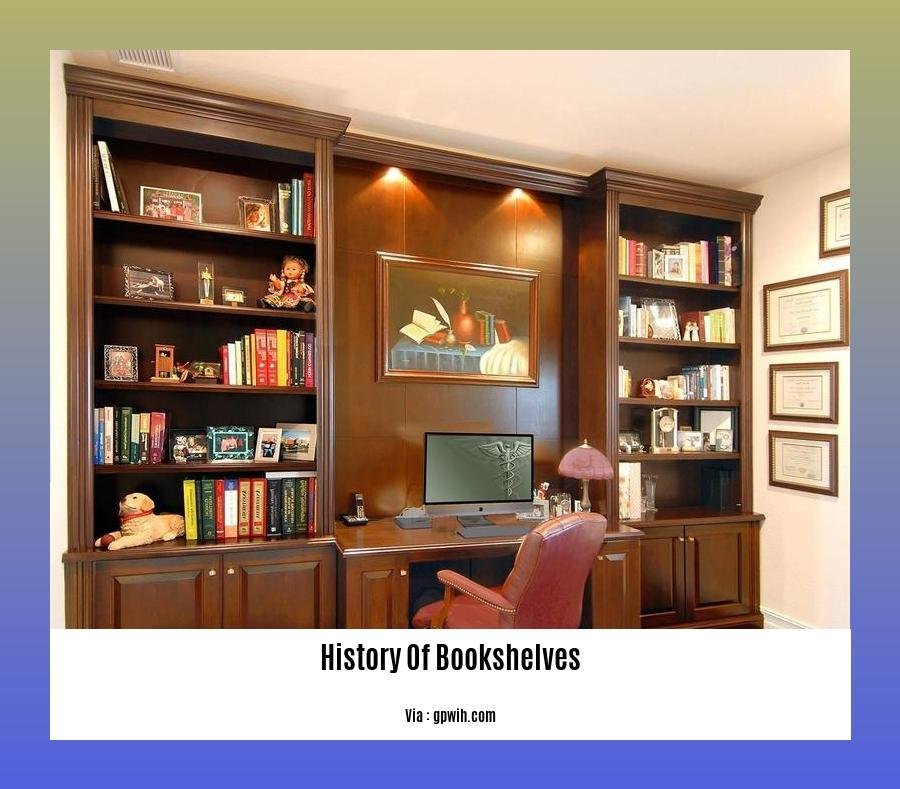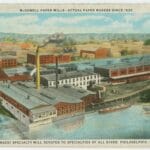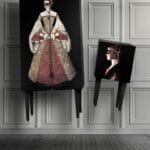Welcome to “A Journey Through Time: The History Of Books”, your comprehensive guide to the captivating history of books. Join us as we delve into the evolution of books, from their humble beginnings on clay tablets to the sophisticated formats of today. Through a meticulous exploration of architecture, culture, and technology, we’ll uncover the fascinating journey of books as they have shaped and been shaped by civilization.
Key Takeaways:
- Definition: A bookshelf is a piece of furniture with shelves to store books or other printed materials.
- Historical Origins: Revolving bookcases were invented in imperial China in the 6th century CE.
- Types: Bookcases come in various styles, including Chippendale and Sheraton with glazed doors and barrister’s bookcases for lawyers.
- Importance: Proper bookshelf construction and arrangement are crucial for book preservation.
- Common Uses: Bookshelves are commonly found in libraries and private homes.
History Of Bookshelves
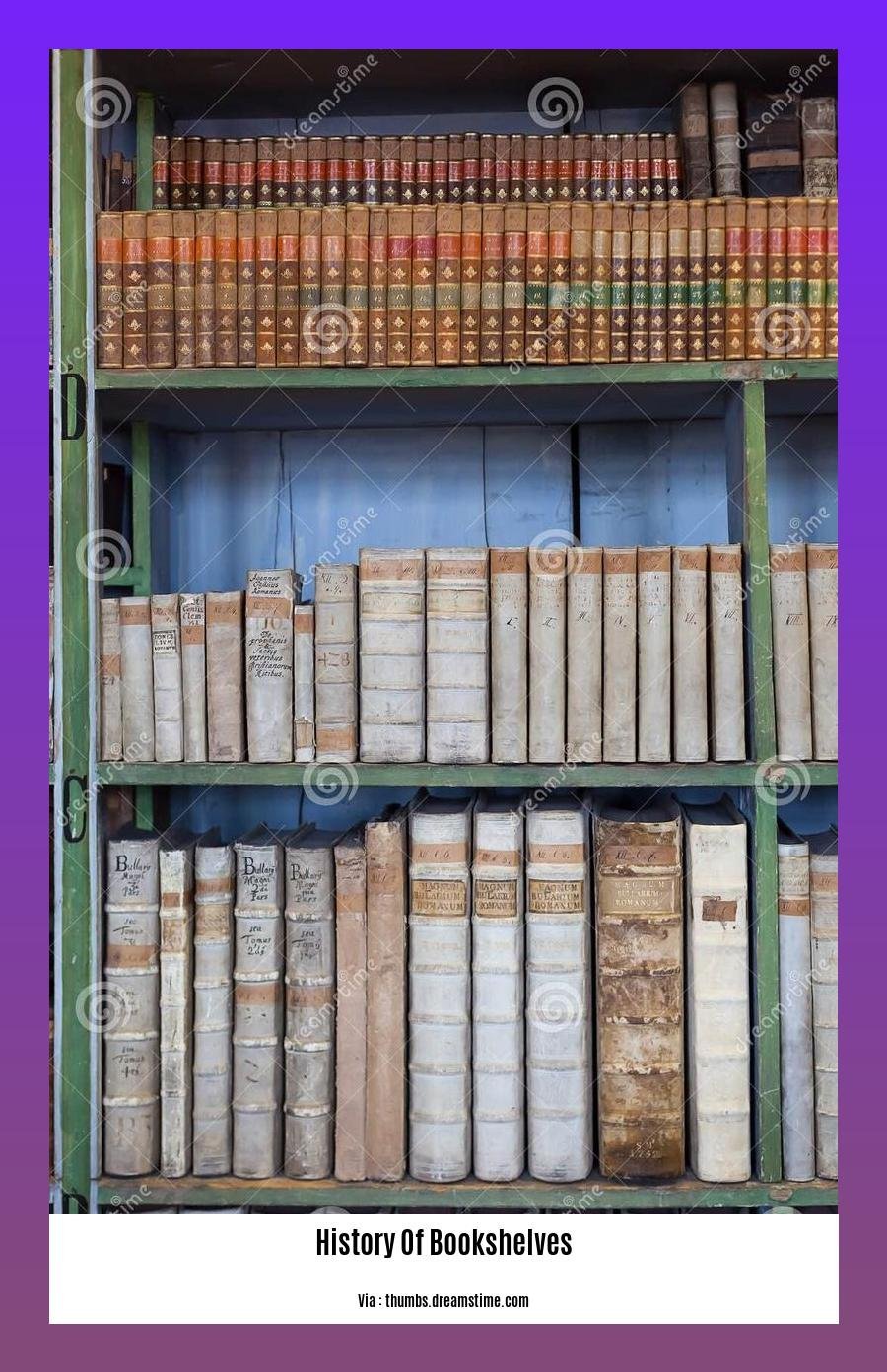
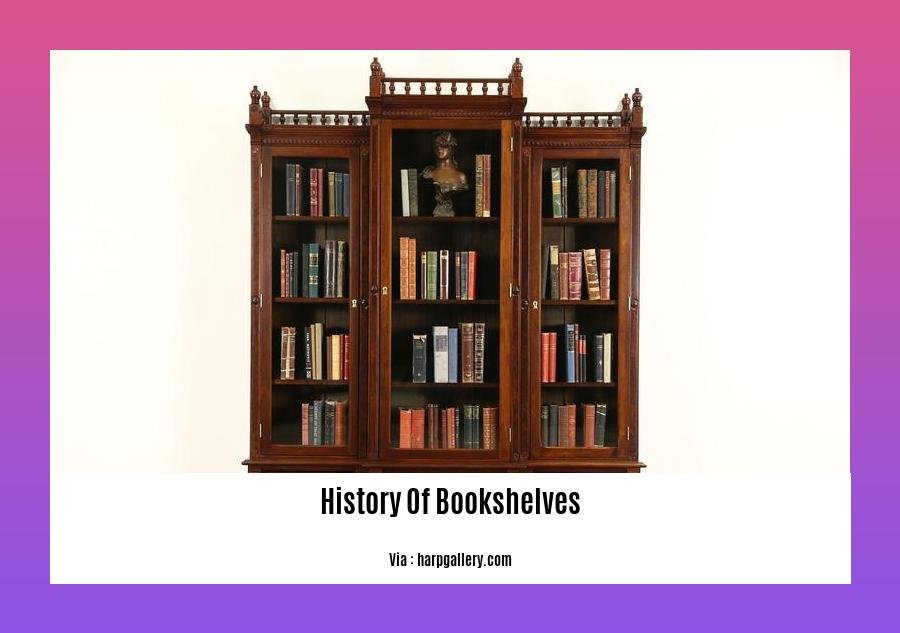
“You may well wonder if shelves have a history,” right? Well, my dear bibliophiles, they do, and quite a fascinating one! Let’s open the dusty pages and dive in.
The Dawn of Bookshelves
In the ancient world, books existed long before shelves. Scrolls were rolled up and stored in boxes or chests. The first known bookshelves emerged in 544 CE in China. They were called “revolving bookcases” and were designed to protect valuable Buddhist scriptures.
Bookshelves in Libraries
As libraries grew, the need for bookshelves to store the burgeoning collection became paramount. Monasteries and universities built grandiose libraries with floor-to-ceiling bookshelves carved from sturdy wood. These shelves were often adorned with intricate designs and embellishments, reflecting the treasured status of books.
Evolution of Design
Over centuries, bookshelves evolved in design to accommodate diverse needs. In the 18th century, English furniture makers introduced Chippendale and Sheraton bookshelves, characterized by delicate fretwork and glazed doors. The barrister’s bookcase, a portable and compact design, became popular for lawyers to carry their legal documents.
Modern Adaptations
The 20th century witnessed a surge in bookshelf innovations. Modular designs allowed for flexible configurations, while materials like metal and glass brought a contemporary look. Today, bookshelves come in a myriad of styles, from sleek minimalist to ornate antique, catering to the diverse tastes of book enthusiasts.
Cultural Impact
Bookshelves have held a profound cultural significance throughout history. They have adorned homes, libraries, and institutions, symbolizing knowledge, learning, and the pursuit of ideas. They have inspired literary works, such as Umberto Eco’s “The Name of the Rose,” a mystery novel set in a labyrinthine library.
Shelving Solutions
Proper bookshelf construction and arrangement are crucial for preserving books. Shelves should be made of durable materials, such as wood or metal, to support the weight of books. Allowing adequate space between books promotes airflow and prevents damage.
-
If you’re a bookworm and want to know how books came to be, you should check out the history of books.
-
Do you want to see how books have evolved over the years? Check out our History of Books Timeline.
-
Do you enjoy reading? Are you curious about how the books you read today came to be? If so, you’ll want to check out our page on the History of Books and Reading.
-
Interested in learning more about the history of the bible? Check out our article on the History of Books of the Bible.
-
Have you ever wondered why certain books have been banned throughout history? Check out our page on the History of Books Being Banned.
-
Looking for a new way to read your favorite books? Check out our page on the History of Books Read On Kindle.
-
If you love books, you’ll love learning about the History of Bookselling.
2.
19th Century Industrial Revolution: Standardization and Modular Designs
As industrialization swept across the globe in the 19th century, a revolution was underway in the world of book storage. The need for efficient and standardized ways to organize and access vast collections of books led to the development of innovative bookshelf designs that emphasized standardization and modularity.
Bookshelves of this era were often constructed using mass-produced components, allowing for interchangeability and easy assembly. This standardization not only streamlined their production but also made it possible to create modular systems that could be easily adapted to different spaces and storage needs.
Standardization and modularity became key principles in library design as well, with architects and librarians recognizing the benefits of creating standardized shelving systems that could be easily expanded and reconfigured as collections grew.
These innovative bookshelf designs not only revolutionized the way books were stored and accessed but also had a profound impact on the architectural landscape of libraries and other institutions. The standardized and modular nature of these shelves allowed for more efficient use of space, creating larger and more open reading areas that fostered collaboration and knowledge exchange.
Key Takeaways:
- Standardization streamlined book storage and retrieval.
- Modular designs allowed for easy adaptation to different spaces.
- Industrialization ushered in mass production of bookshelf components.
- Modular systems facilitated library expansion and reconfiguration.
- Bookshelf designs reflected the changing needs of the industrial era.
Sources:
- The History and Evolution of Bookshelves
- Design of the Library Building
20th Century and Beyond: Modern and Contemporary Bookshelves
As the world entered the 20th century, bookshelves evolved to keep pace with changing lifestyles and design trends. Modern and contemporary bookshelves emerged, embracing functionality, simplicity, and aesthetics.
The Bauhaus Influence
The Bauhaus movement, known for its functionalist approach to design, had a profound impact on bookshelf design. Bauhaus designers emphasized clean lines, geometric shapes, and the use of new materials like steel and glass. The result was sleek, efficient bookshelves that complemented the minimalist interiors of the era.
Mid-century Modernism
The post-World War II era saw the rise of mid-century modernism, characterized by organic forms and warm, natural materials. Bookshelves from this period often featured curved edges, tapered legs, and a combination of wood and metal.
Contemporary Bookshelves
Today’s bookshelves continue to reflect the evolution of modern design. Contemporary bookshelves prioritize open shelving, allowing for easy access to books while showcasing their aesthetic appeal. They often incorporate a mix of materials such as wood, metal, and glass, creating a visually interesting and personalized touch to any space.
Key Takeaways:
- Modern bookshelves prioritize functionality and simplicity, reflecting the Bauhaus influence.
- Mid-century modern bookshelves embrace organic forms and warm materials.
- Contemporary bookshelves emphasize open shelving and a mix of materials for visual appeal.
Sources:
- The History of Bookshelves: From Ancient Scrolls to Modern Designs
- Modern Bookshelves: A Guide to Selecting the Perfect Style for Your Home
FAQ
Q1: When were the first bookcases created?
A1: The origins of bookcases can be traced back to the early Roman Empire (1st century), when private libraries emerged and required furniture to store books.
Q2: What were the early types of bookcases like?
A2: In the 16th-18th centuries in Europe, bookcases became decorative fixtures in libraries and public buildings, often featuring ornate carvings and architectural details.
Q3: How did the Industrial Revolution impact bookcases?
A3: Mass production during the Industrial Revolution made bookcases more accessible and affordable, leading to their widespread use in homes and institutions.
Q4: What is the significance of the Billy Bookcase?
A4: Designed by IKEA in the mid-20th century, the Billy Bookcase became an iconic and versatile bookcase design that remains popular worldwide.
Q5: What are the current trends in bookcase design?
A5: Contemporary bookcases often embrace minimalist designs, open shelving, and a mix of materials like wood, metal, and glass, reflecting modern aesthetic preferences.
